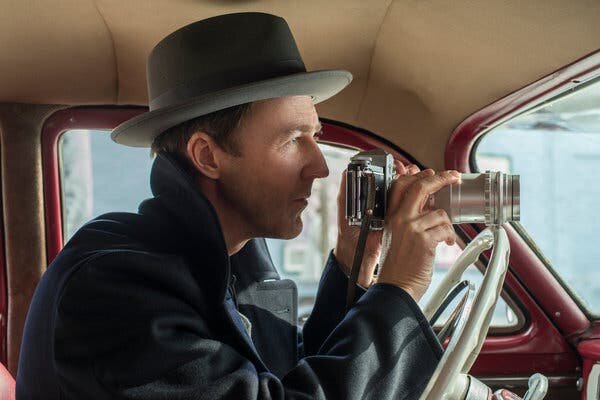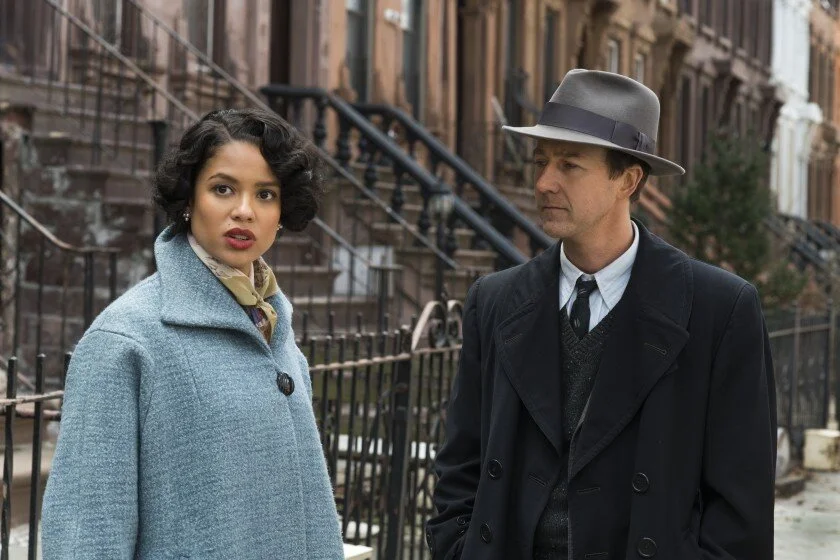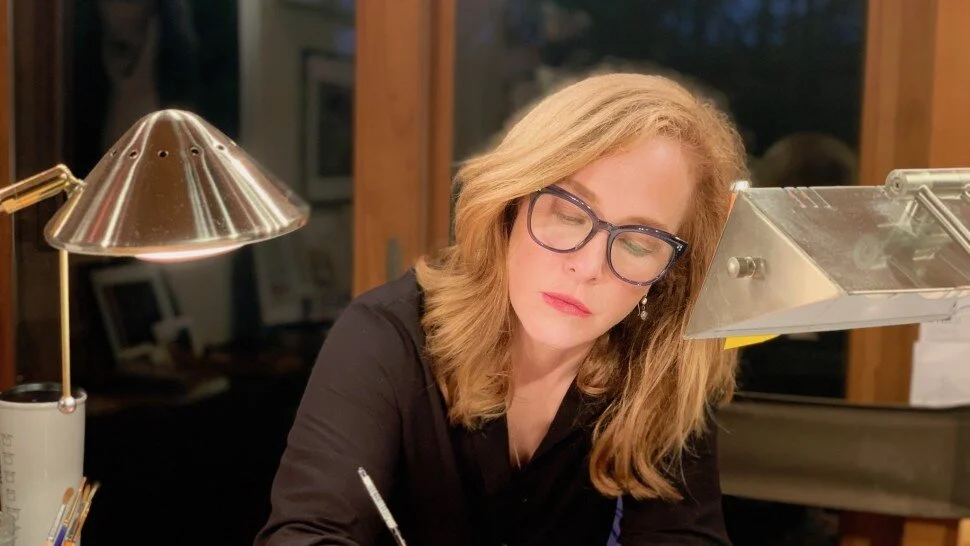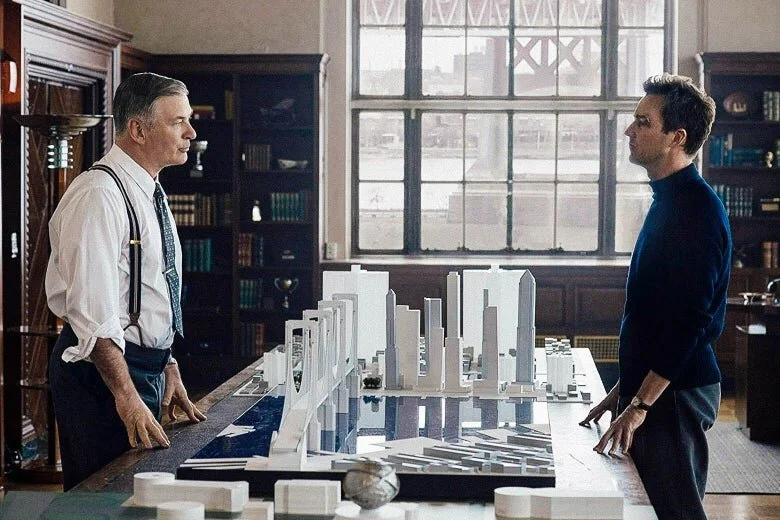Amy Roth, Motherless Brooklyn: Costume Designer Takes Us To The '50s In Brooklyn
Motherless Brooklyn, NY Times
Written by Josephine Wasburn
Motherless Brooklyn, released on November 1st, centers on an offbeat private detective, masterfully acted by Edward Norton, hell bent on solving the murder of his mentor and only friend, played by Bruce Willis. The film was also written, directed, and produced by Edward Norton, who started the journey of bringing the book of the same name to the big screen in 1999.
LA Times
Costume designer Amy Roth was tasked with bringing Norton’s 1950s vision to life and dressing iconic actors Willen Dafoe, Alec Baldwin, and Leslie Mann (to name a few). With a background in both film and television, and an Oscar-winning costume designer aunt, Amy brought into Motherless an array of sartorial choices that at once give an effortless feel, yet perfectly embody the essences of each character, staying, of course, in the realistic restraints of 1950s society.
Playbill.com
Here Amy talks growing up on set, her preference for period pieces, and tackling Norton’s epic detective thriller.
Slate.com
JW: How did you get started working in costume design?
AR: “I worked at studio services at Saks Fifth Avenue, under a woman named Connie Buck. Back then, you couldn’t as a costume designer walk into a store and take clothing out on memo, you had to pay for it and then you wouldn’t always be able to return it.”
JW: Is your aunt [Oscar-winning costume designer Ann Roth] how you got started working in costume design? Was she the reason you got into this?
AR: “The only reason. When Ann would do a film on location she would say come join us, and my cousin and I would play together when we were younger. As I grew older I started becoming very enamored with set life and being in a fitting room with Ann, and the seriousness that would fall across the room, and no one had ever talked to us seriously ever in our lives. To be 12 years old and be part of something serious and interesting and creative I would just stand there and try and take it all in.”
“Ann was special. She’s very creative. She’s so creative with the actor, to watch, I remember Meryl Streep fitting on Silkwood, and this was years ago, and I remember that fitting, and being in the room and knowing somehow this woman was a very important actor. Even though she was just at the beginning of her career, very nascent in her film world. I could feel that seriousness and I wanted to be part of it.”
Filmaffinity.com
JW: How does your strategy for tackling the costume design change movie to movie, as well as television?
AR: “I’ve done a lot of television where you end up getting this closet of things which is actually a lot of fun, for a lead character. So I many times end up purchasing something that you may not need now but it could end up in a future script. Designing for film you have a script and you’re not going to vary from it very much. You fit per day per scene for this actor and the script. Motherless was difficult because we didn’t have a lot of money, in television you have a lot of money. We were on a set budget, so I was nervous, because in a film you’re looking at locations, you’re waiting to hear back if this actor is taking the role or not. A location can dictate how many people you’re going to dress. For instance, if you’re in a church and the director loves this little chapel but at the last minute it may fall through. So suddenly you have a much bigger space you have to fill with people. Your numbers can jump higher or lower. For a film you’re not quite sure the scope of things until you land on location.”
JW: Did they give you a lot of creative freedom for this or was it more rigid?
AR: “Very creative, Edward and I keep talking about this lookbook in our interviews which is funny but it’s true. I brought a lookbook to my meeting with him, and he just, we had many of the same references. I think when you know someone has the same vision, and gets the essence of what you’re trying to do here, they pretty much leave you alone. In the case of Edward we had the fitting together, and I think it’s difficult to go from being analytical to free association, like when you want to be absorbing your surroundings and writing your feelings as an actor as opposed to being analytical as a director. I watched him, and he’s brilliant, I would stand by and enter into the conversation when I felt like I needed to put my input in. He gave me my space, but in this case you need to give your director/actor/producer/writer his space. We ended up not communicating a lot because he had a lot on his plate.”
Awardscircuit.com
JW: Where did you look for inspiration for Motherless Brooklyn?
AR: “1950s New York is very inspirational. I go to museums, I walk around the streets, I love documentary photos. I love looking at people that movies weren’t made of. I love looking at the unseen. Gordon Parks. Robert Frank. Vivian Maier. People who walked around the street and took pictures of people who didn’t know they were being photographed. It’s kind of like peering in, and it really served the script here too. Saul Leiter is another great photographer too. When the camera is peering into a couple arguing it’s like you’re spying. Because he [Norton’s character] was a detective, so much of that was working for me, truly speaking to me.”
JW: I’ve been watching a lot of Marvelous Mrs. Maisel, and those costumes..
AR: “Speaking of them – they had all the costumes. It was the Irishman and Maisel were shooting at the same time in New York, so when we were starting up I called around and everyone said we don’t have anything. You were asking what’s different about film and television. I design and build a lot of clothes for film. TV’s too fast, you can’t. For two reasons I was building: 1) because it wasn’t there, what I wanted, so we had to make it. 2) We had a stunt sequence in the beginning of the film that we needed quadruples of actors’ clothing, so I had to take 10 people’s costumes and make four or five of each.”
“There’s a disconnect between being called costume design and what we actually do. It’s unlike a lot of other departments, you’re prepping and you’re on your feet but you’re having to do a lot of research and think.”
JW: Do you prefer to work on period pieces?
AR: “I do I love period pieces much more. I love fantasy. I think the hard thing about contemporary is that everyone has an opinion on it, whether they’re in costume design or not. When you’re trying to design something it can be very disruptive to the process if somebody entertains an idea too much on the spot. That changes everything. When it’s a period piece it’s harder for an actor or someone to come in and have an idea here.”
JW: Lastly - How do you define your personal style?
AR: “I wear a work uniform. I love to put basically the same pair of pants and shirt on every day. It’s so freeing in my mind because if I look down at myself and I see anything that jumps out at me it distracts me in a way. I love a good shoe. It’s all accessories. Shoes, coat, purse, if that looks good you’re doing great. I don’t really own a big heavy coat, I have a sort of medium weight coat I put on around October and I take off in April.”
Actors, Gugu Mbatha-Raw and Edward Norton
JW: What is the coat?
AR: “It’s a Balenciaga coat that’s kind of like a car coat, it’s short enough, I can’t wear a long coat. It has huge pockets that can actually fit an iPad. I wear my cellphone on a bandolier that goes around my neck. I try to keep it neat and trim”
“My personal style from film is probably realism. I stemmed from the woman who designed Midnight Cowboy. I don’t do pretty for the sake of pretty. I don’t want to get too much attention for what I’m doing to somebody because I don’t want to distract from the story, because I tend to do projects with very strong writers. What’s on the page is so good, you get a good actor, it brings that thing to life.”
JW: So you must have loved working with Edward Norton
AR: “I was surprised I was reaching one of my goals so soon in my career.”
Comment and let us know what’s on your PAGE.
Featured













Japan is a country where ancient traditions blend seamlessly with modern life, but to truly experience its rich heritage, travelers must venture beyond the bustling cities.